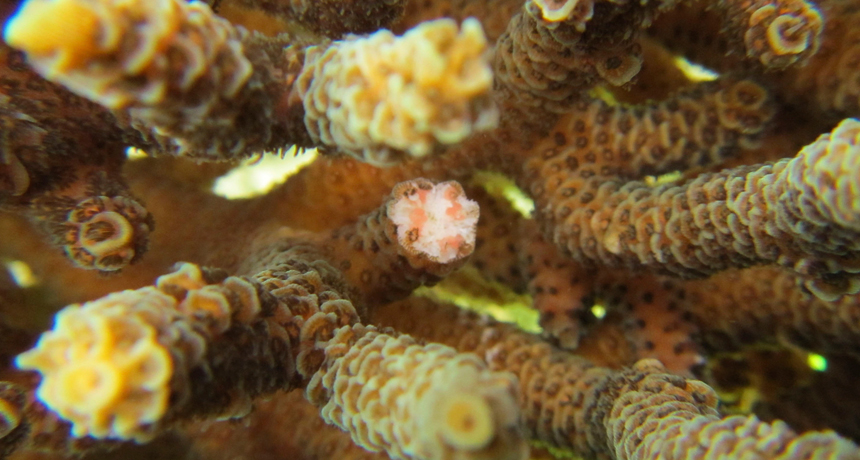Corals, fish know bad reefs by their whiff
Compounds drifting off certain overgrown seaweeds discourage youngsters from settling in failing habitats

NEXT GEN REEF Little pink bulges indicate this coral is about to release gametes for open-water fertilization. Where the resulting babies will settle down to live could depend on how badly reefs stink.
Danielle Dixson